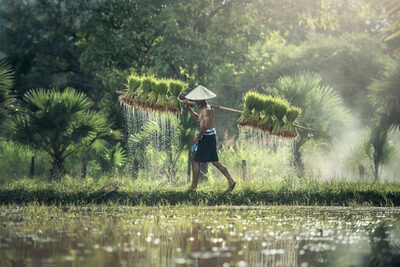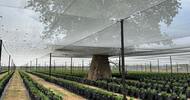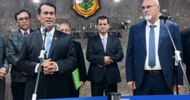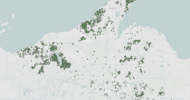The theme of the World Bank’s upcoming Land Conference in May is “Securing land tenure and access for climate action”, and according to its Land 2030 Global Partnership Umbrella Program, the Bank is working “to assist developing countries in achieving land tenure security for all men and women.” However, in practice the Bank’s efforts to increase security of tenure have “only reinforce[d] land inequalities…and [the] disenfranchisement of rural peoples”, according to Gail Orduna of the People’s Coalition on Food Sovereignty (PCFS).
The forms of land tenure – the rules and arrangements connected with owning and accessing land, especially land used for farming – the Bank has promoted have undercut existing traditional forms of land tenure. Its promotion of private markets for land, Orduna explained, “have meant land is easily transferable, and therefore potentially alienable from the communities that depend on it for their survival.”
The transferability of land, along with the liberalisation of agriculture and finance the Bank and IMF have pushed on Global South states, have facilitated investment in agribusiness and driven the financialisation of national agricultural sectors. This has privileged the profits of investors while actively undermining the livelihoods of local communities (see Observer Spring 2020), threatening the long-term social and environmental sustainability of agricultural systems, and worsening existing imbalances of power.
Further, as R. Leshma Manogna and Nishil Kulkarni of India-based Birla Institute of Technology and Science-Pilani note, the opening of national agricultural sectors means that dispossessed communities may face higher food prices as speculators drive up the price of basic staples in international markets as they did in 2022 – causing not a food supply crisis, but rather a food price crisis (see Observer Summer 2022).
Financialisation drives land grabbing
The effects of financialisation on smallholder farmers and local communities around the world have been profound. Financialisation-driven land grabbing started in earnest in the 2000s, driven by high food and fuel prices and the emergence of farmland as a relatively safe and high earning asset class after the 2007-2008 financial crisis. According to PCFS, in the decade after the crisis, 12 million people were displaced by land grabs, predominantly in the Global South. This rate of dispossession has only increased since the pandemic, as high global food prices have driven record profits for corporate agriculture. “Many of these landgrabs are backed by complicit national elites and enforced through violence, including the killing of local activists,” Orduna added.
The Bank claims its promotion of private investment in agriculture helps end poverty and hunger. However, in many cases, according to Jennifer Clapp of the University of Waterloo and S. Ryan Isakson of the University of Toronto, the financialisation of agriculture can contribute to food insecurity.
Further, the World Bank is implicated in land grabbing through more than just pushing reforms to facilitate the commercial exploitation of land. According to PCFS, the International Finance Corporation (IFC), the Bank’s private finance arm, has been involved in financing the acquisition of land through financial intermediaries in over 30 countries, and this has been linked to the displacement of hundreds of thousands, including in Ethiopia, Sierra Leone, Guinea and Gabon (Observer Summer 2017).














